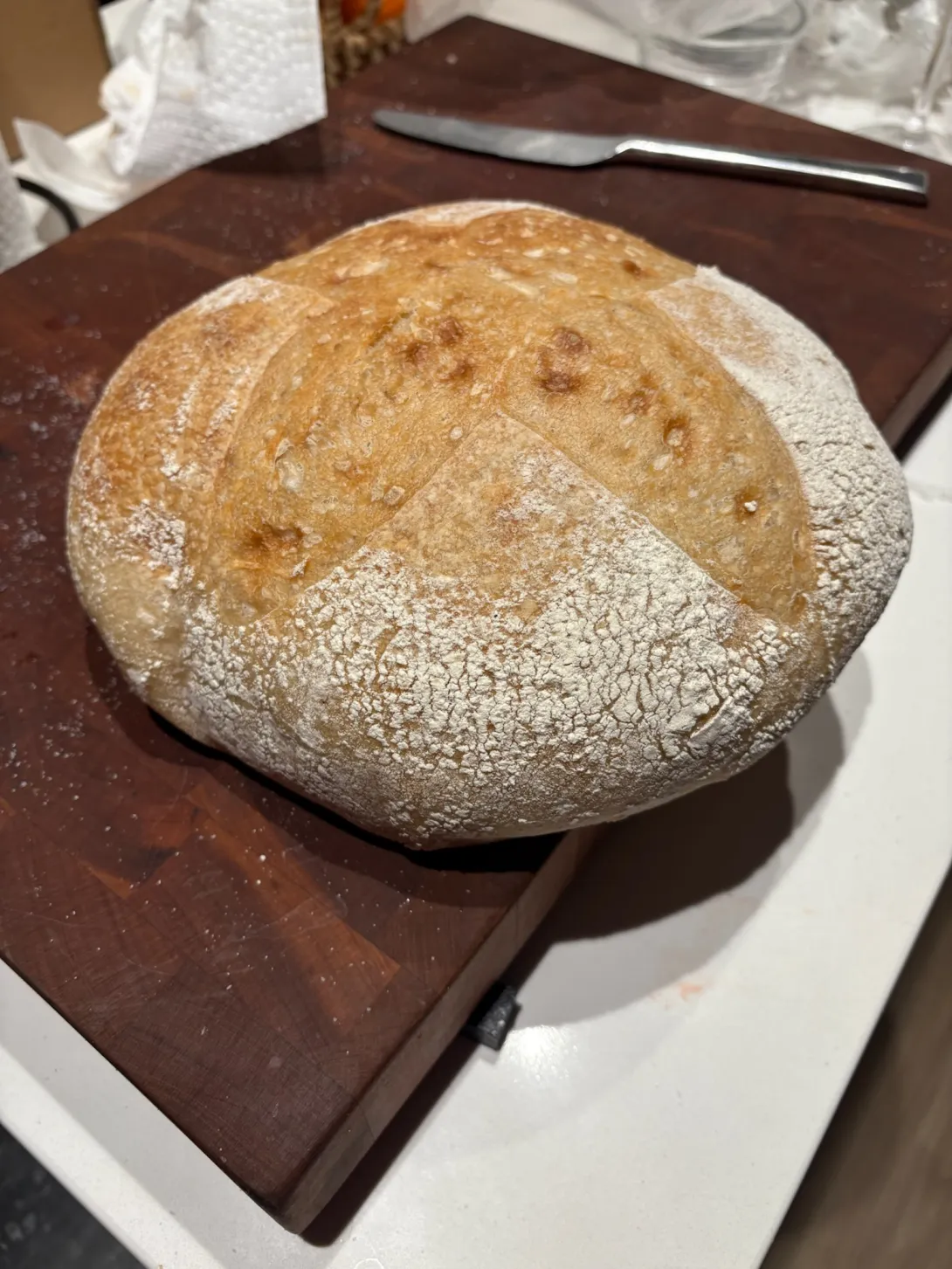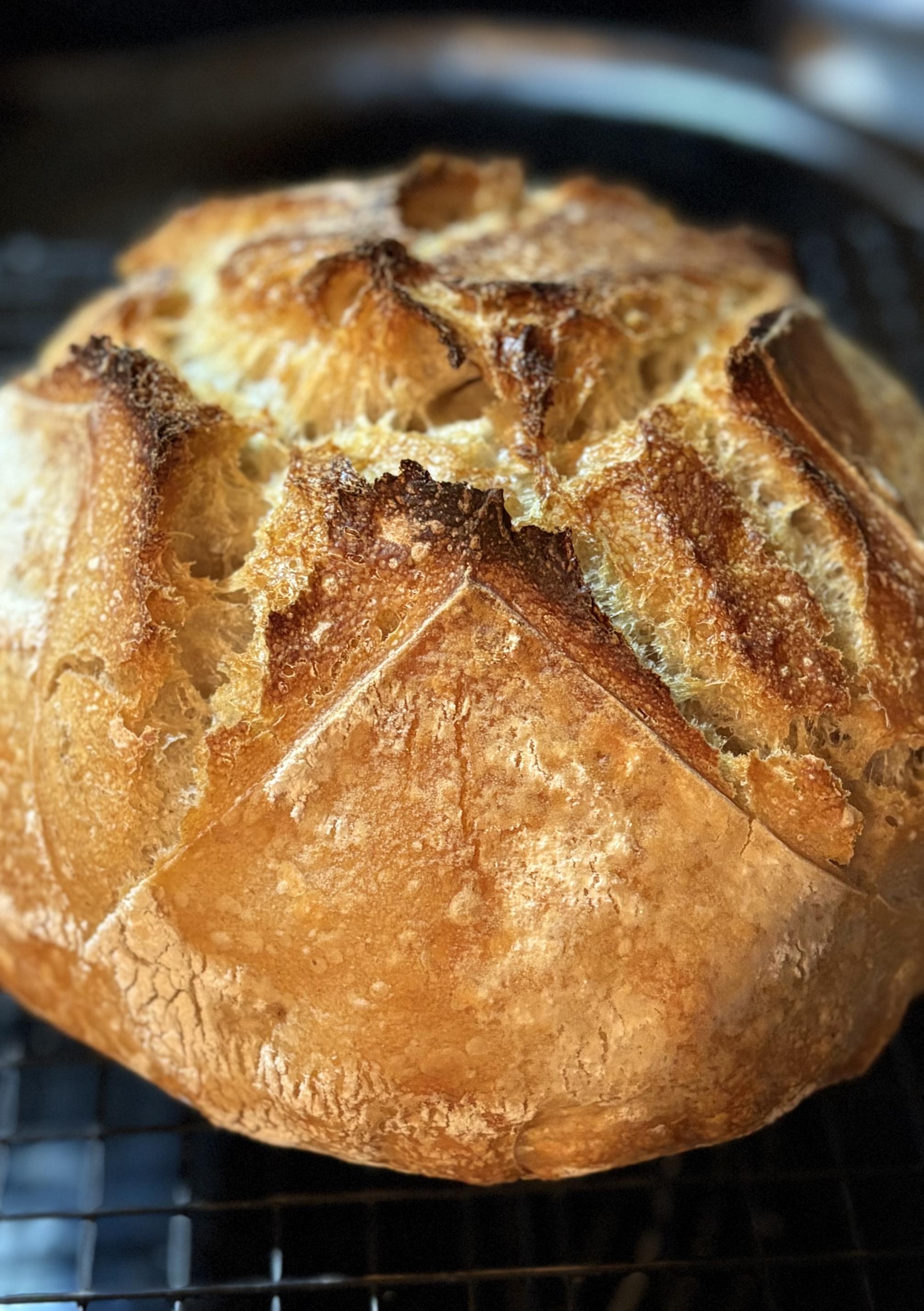
I've been trucking along pretty well for a while now with good oven spring and nice crust that folds back on score lines with good edges. However, everyone once in a while I get this -- crust stuck to the loaf.
Is this more likely the result of under-proofing or under-proofing?
(Apparently I can't post two pics, so I'll send a pic in a reply of a more typical loaf for me.)
I wouldn't call it over proofed. Just fully proofed. Or maybe slightly over proofed. Over proofed is for me, when the dough collapses during the bake. But I'm not a native english speaker.
Sometimes you want to wait until the dough is fully proofed before baking. Think about all the breads you don't score and don't want them to "explode" in the oven. For example buns, etc.
The pic of your typical loaf is gorgeous! The other one is probably caused by an extra-long proof (or bulk ferment), though it could also be something about the shaping, a higher hydration than expected, or something different about the flour or starter. It's also possible to get the appearance of the first loaf with a height near the second one.
Basically, when a loaf has a lot of reserve rising ability, during baking it will expand so vigorously that it rips open at surface flaws. When it doesn't have that reserve, it can still expand gently but it can't manage that ripping action. And when a loaf is both soft and without much reserve, it can spread sideways without ripping, which seems to fit your first picture. That tight surface skin that some writers talk about helps to prevent sideways slumping (though it can sometimes reduce overall expansion too). That's why I wrote that shaping could also be involved.
TomP
slightly overproofed & oversteamed? ... or a dip in the oven temp, maybe -- so that steam condensed on the crust & boiled it rather than softening it? How's the crumb and the flavor?
Rob
Steam condensing on the crust has not produced that effect for my loaves. To be more precise, I have produced both kinds of loaves using the same steaming setup. I typically get a nice crispy crust even though I get condensation on the surface. In fact, I like to get the condensation because then I tend to get a shiny crust and (often) a deep reddish-brown color that I like.
In home ovens the oven temperature is always going to dip by quite a lot (excluding the use of preheated Dutch Ovens).
I just remembered another possibility, though. If the loaf's surface is relatively wet at bake time, letting it dry out for 10 minutes or so before scoring and baking can help with the scoring and enhance the ripping/ear effects.
It seems to have been under-proofing. I also boosted my hydration back to 75-80% and I'm back to my regular results. Since I was auditing everything, I did a rigorous check of oven temp and was suprised to find that even having the oven door open for 5-6 seconds could drop the ovem temp by 30-40F. I've allowed my Dutch oven to get up to temp longer so it at least stays at temp as I load the loaf even if the oven temp dips a bit. Thanks for the many repsonses.